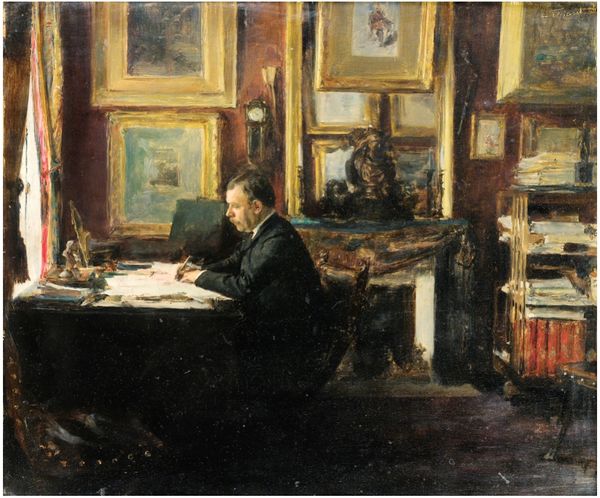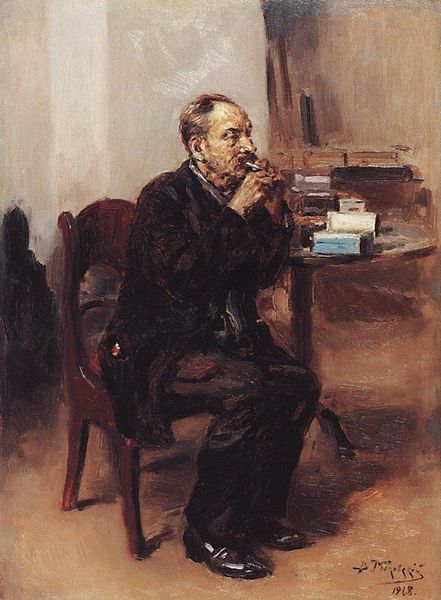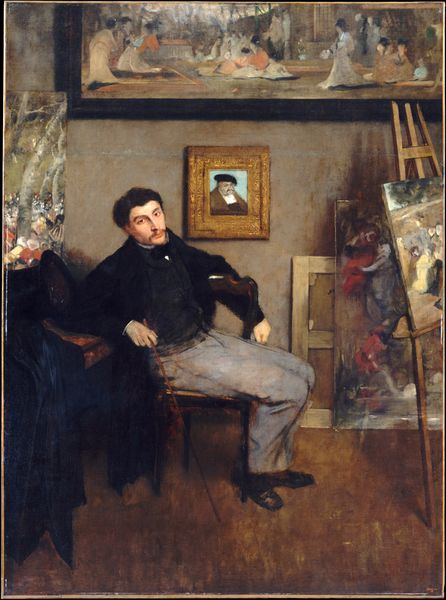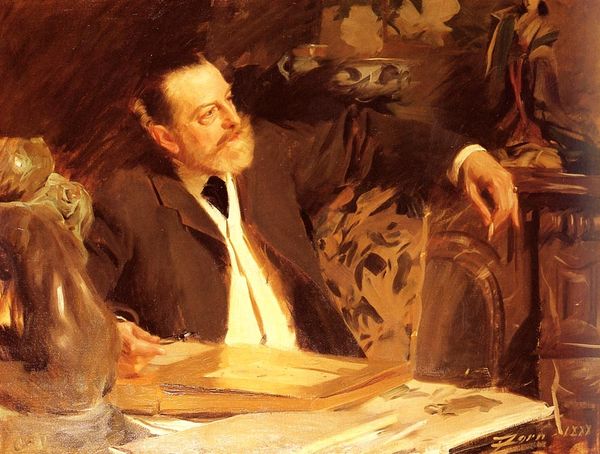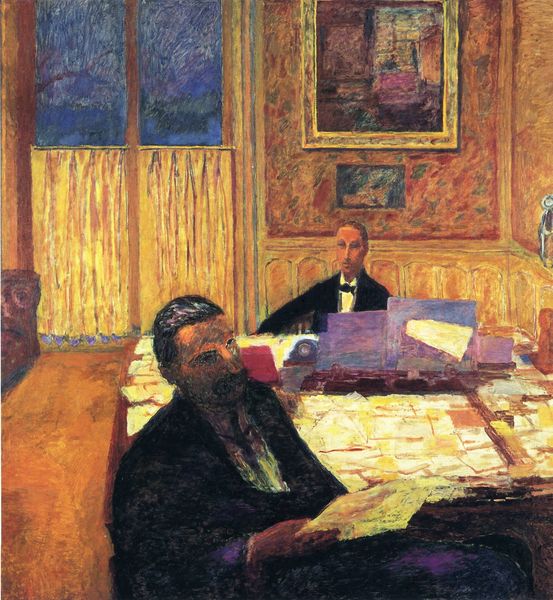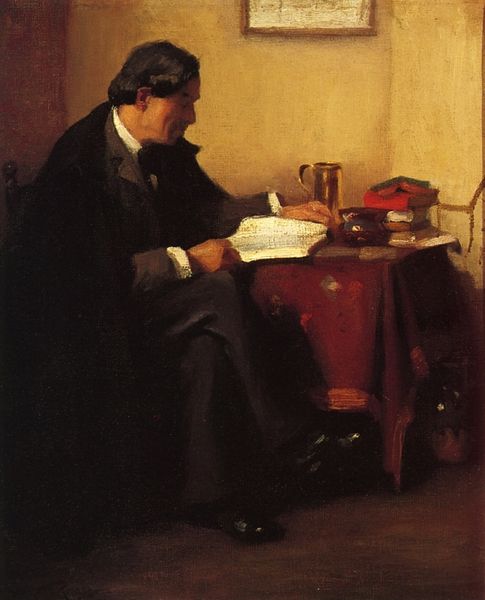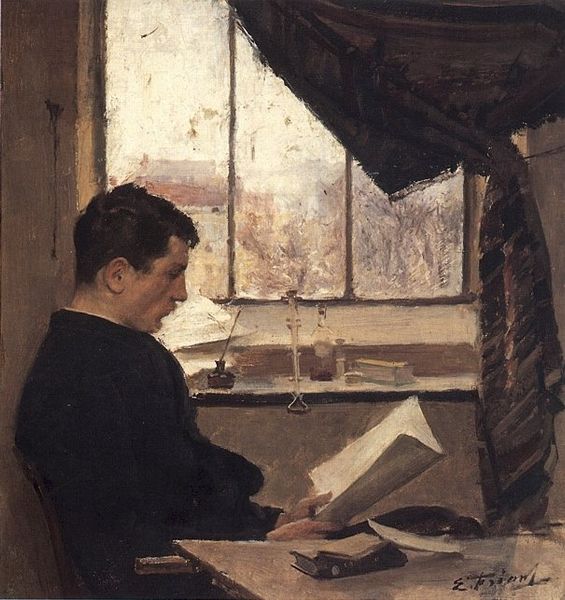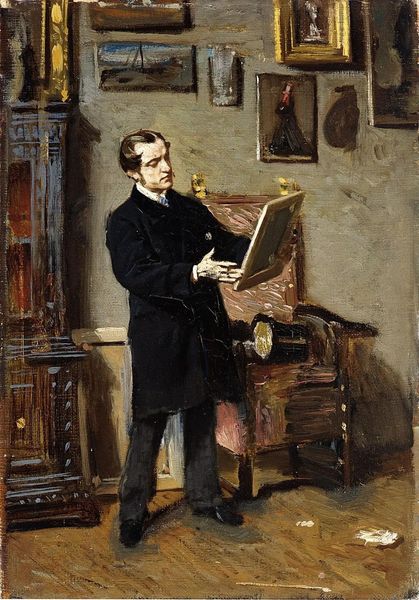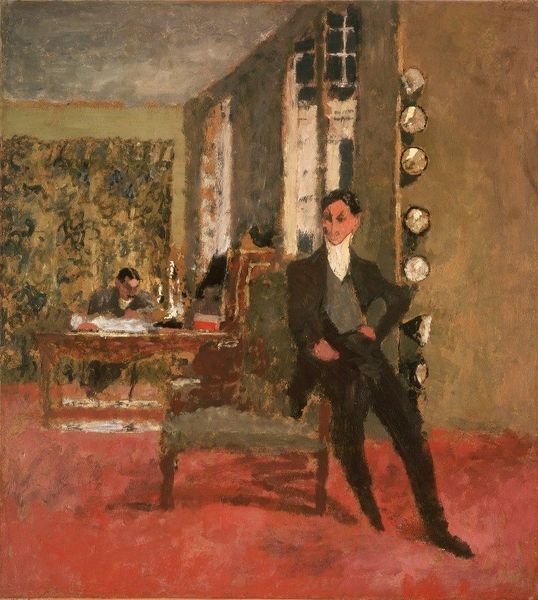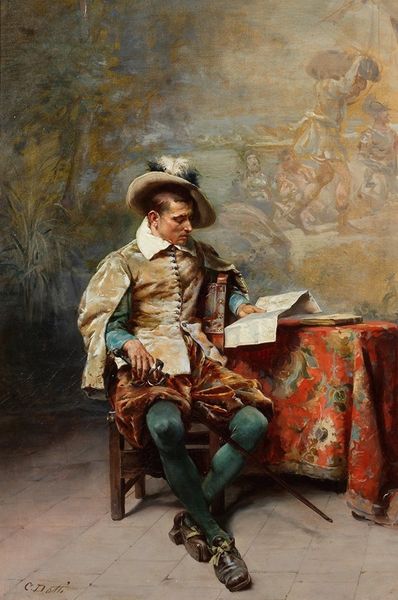
Dimensions: 32 x 46.8 cm
Copyright: Public domain
Curator: So, we have before us Giovanni Boldini's "The Arts Lover," painted in 1866. Editor: The immediate sense is one of comfortable introspection. Look at the way the figure is posed; he is seated and engrossed in reading, surrounded by objects hinting at artistic and intellectual pursuits. The warm tones give it a feeling of quiet concentration, I would say. Curator: Yes, I think that is a great point. Considering the socio-political context of the time, this image provides us with insights on art patronage. Boldini, within his broader oeuvre, engages with themes related to class and intellectual identity formation, so it will be important to situate this figure within this period. I see a wealthy, male subject engaging in self-cultivation. Editor: And it seems the painting almost creates an environment. You notice things like the stacks of books and papers, and even a partially-visible artist's easel on the side. He is presented within this space, so there's the visual rhetoric for understanding high culture. I wonder, though, if this could be regarded more critically—considering access, gender and power structures of the era? Is the setting a kind of personal advertisement for male intellectualism? Curator: Certainly. We must examine what's visible and what remains concealed. The gaze of the sitter invites us to engage, while the objects and materials serve as the stage to build a relationship between self and the arts. What do you think about Boldini choosing to represent such a tableau through oil paint, in terms of tradition, patronage and technique? Editor: Using oil on canvas situates it within a tradition, and implies a level of artistic aspiration that, for the average person at the time, would have been inaccessible. This isn't a quick sketch; it is a declaration of something cultivated, of value. Boldini captures an important moment in Italy at the intersection of aesthetic ideals, social position, and the visual arts. Curator: It really invites reflections on how cultural institutions influence what we define as "art" or "culture". Editor: Yes, reflecting on art and its place within society helps to deepen how we all experience art and culture today.
Comments
No comments
Be the first to comment and join the conversation on the ultimate creative platform.

